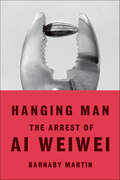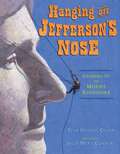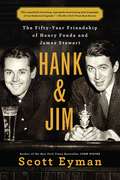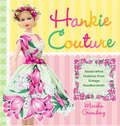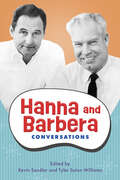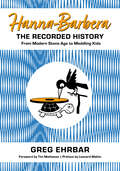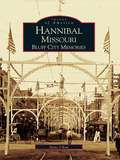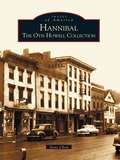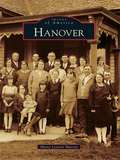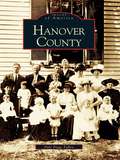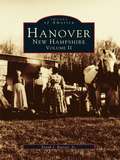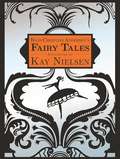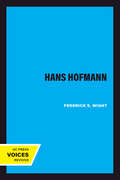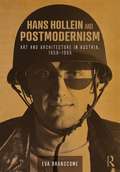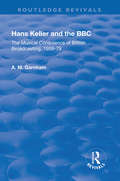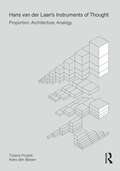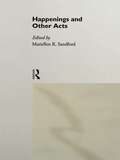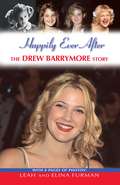- Table View
- List View
Hanging Man: The Arrest of Ai Weiwei
by Barnaby MartinThe gripping story of post-Mao China and the harrowing fate of the artist and activist Ai WeiweiIn October 2010, Ai Weiwei's Sunflower Seeds appeared in the Turbine Hall in the Tate Modern. In April 2011, he was arrested and held for more than two months in terrible conditions. The most famous living Chinese artist and activist, Weiwei is a figure of extraordinary talent, courage, and integrity. From the beginning of his career, he has spoken out against the world's most powerful totalitarian regime, in part by creating some of the most beautiful and mysterious artworks of our age, works which have touched millions around the world.Just after Ai Weiwei's release from illegal detention, Barnaby Martin flew to Beijing to interview him about his imprisonment and to learn more about what is really going on behind the scenes in the upper echelons of the Chinese Communist Party. Based on these interviews and Martin's own intimate connections with China, Hanging Man is an exploration of Weiwei's life, art, and activism and also a meditation on the creative process, and on the history of art in modern China. It is a rich picture of the man and his milieu, of what he is trying to communicate with his art, and of the growing campaign for democracy and accountability in China. It is a book about courage and hope found in the absence of freedom and justice.
Hanging Off Jefferson's Nose: Growing Up On Mount Rushmore
by Tina Nichols CouryGrowing up in the shadow of Mount RushmoreLincoln Borglum was a young boy when his father, the great sculptor Gutzon Borglum, suggested to a group of South Dakota businessmen that he should carve the faces of four presidents into a side of a mountain as an attraction for tourists. But Mount Rushmore would never be finished by Gutzon. It would be his son who would complete the fourteen-year task and present America with one of its most iconic symbols.A California Reading Association Eureka! Honor Book Award-winner
Hanging Plants: Creating Kokedama for the Home
by Coraleigh ParkerIndoor hanging baskets? Who needs them! Learn all about the Japanese art of creating pot-less suspended plants, known as kokedama, from New Zealand hanging plant extraordinaire and botanist, Coraleigh Parker. Coraleigh's moss ball creations, featuring orchids, air plants, cacti, succulents, flowering bulbs, tropical plants and even small trees and herbs, are suspended in mid-air and supported by nothing more than a series of strings, intricately wrapped, cocoon style, around a root ball. Kokedamas are very simple to make and have a magical quality; by suspending them in the air with string, with Coraleigh&’s help and 25 easy-to-follow projects, you can create a hanging garden inside your home in no time. ?Decorating with indoor plants has never been more popular and, following on from terrariums, concrete pot planting and the obsession with fern, cacti and succulents, contemporary kokedama is the next trend that&’s spreading fast. Kokedama is the ultimate botanical trend as it offers everything through a single, versatile and inexpensive craft: you can turn any of your favourite plants into a kokedama &“on a string&”!
Hanging by a Thread (A Sewing Studio Mystery #2)
by Dorothy HowellThe latest novel in a new crafting cozy series in the genre-leading Kensington Cozy Mystery program focusing on the members of a Sewing Studio. Some of the independent shops in this sleepy town are barely hanging on financially—and that includes Sarah&’s Sweets, Abbey&’s aunt&’s bakery. The shop&’s advantage—aside from the deliciousness of its products—is the fact that it&’s the only bakery in the area. But it looks like that&’s about to change. The second wife of a wealthy businessman wants her own bakery—and money is no object. When murder unravels the plans for the competing shop, Aunt Sarah is an immediate suspect—and Hideaway Grove&’s merchants are on pins and needles about a big upcoming women&’s conference, fearing the organization will cancel their booking because of the crime. Abbey&’s doing her best to stay optimistic and stitch some custom tote bags for the attendees, but she&’s also concerned with patching up Aunt Sarah&’s good reputation. And when it comes to sorting through the possible motives of the victim&’s family members and associates, she&’s got a few tricks up her sleeve . . .
Hank and Jim: The Fifty-Year Friendship of Henry Fonda and James Stewart (A Biography of Two Hollywood Legends)
by Scott Eyman&“[A] remarkably absorbing, supremely entertaining joint biography&” (The New York Times) from bestselling author Scott Eyman about the remarkable friendship of Henry Fonda and James Stewart, two Hollywood legends who maintained a close relationship that endured all of life&’s twists and turns.Henry Fonda and James Stewart were two of the biggest stars in Hollywood for forty years, but they became friends when they were unknown. They roomed together as stage actors in New York, and when they began making films in Hollywood, they were roommates again. Between them they made such classic films as The Grapes of Wrath, Mister Roberts, Twelve Angry Men, and On Golden Pond; and Mr. Smith Goes to Washington, The Philadelphia Story, It&’s a Wonderful Life, Vertigo, and Rear Window. They got along famously, with a shared interest in elaborate practical jokes and model airplanes, among other things. But their friendship also endured despite their differences: Fonda was a liberal Democrat, Stewart a conservative Republican. Fonda was a ladies&’ man who was married five times; Stewart remained married to the same woman for forty-five years. Both men volunteered during World War II and were decorated for their service. When Stewart returned home, still unmarried, he once again moved in with Fonda, his wife, and his two children, Jane and Peter, who knew him as Uncle Jimmy. For his &“breezy, entertaining&” (Publishers Weekly) Hank and Jim, biographer and film historian Scott Eyman spoke with Fonda&’s widow and children as well as three of Stewart&’s children, plus actors and directors who had worked with the men—in addition to doing extensive archival research to get the full details of their time together. This is not just another Hollywood story, but &“a fascinating…richly documented biography&” (Kirkus Reviews, starred review) of an extraordinary friendship that lasted through war, marriages, children, careers, and everything else.
Hankie Couture
by Greenberg MarshaWhat is"Hankie Couture"? A stunningly original collection of doll-sized fashions--everything from pajamas to wedding gowns--meticulously crafted from vintage handkerchiefs. Accented with slyly witty "Hankie Couture" girl philosophy, this book is a stylish showcase of 125 unique fashions and accessories. It is also a how-to guide that allows you to transform treasured heirlooms or colorful flea-market finds into one-of-a-kind fashion ensembles. Whether it's a floral sundress that fans out as it twirls, an apron dress with a scalloped border, or a neatly pin-tucked linen dress with pearl buttons, the book encompasses a seemingly infinite variety of exquisite dresses. Neither crafters nor doll collectors have ever seen a book like this, making Hankie Couture a uniquely irresistible challenge to crafters. And with its beautiful design and kitschy lifestyle advice, this makes a great gift book.
Hankie Couture: Handcrafted Fashions from Vintage Handkerchiefs (Featuring New Patterns!)
by Marsha GreenbergUnleash your imagination and transform colorful handkerchiefs into more one-of-a-kind fashion ensembles! Hankie Couture is back in this newly revised edition with even more stunning and original doll-sized fashions meticulously crafted from vintage handkerchiefs. With a gallery of 125 unique mix-and-match outfits and accessories, and accented with witty lifestyle advice from the Hankie Couture girl, this book showcases a limitless variety of doll-sized fashions for every occasion. Complete with a how-to and materials guide, this book is the perfect companion for crafters looking to transform treasured heirlooms or colorful flea-market finds into one-of-a-kind fashion ensembles -- whether an eye-catching color blocked dress, sophisticated great coat, or a go-everywhere purse and hat. With its beautiful design and unique, kitschy lifestyle advice, Hankie Couture makes a great gift for crafters, doll-enthusiasts, and vintage lovers alike.
Hanna and Barbera: Conversations (Television Conversations Series)
by Kevin Sandler and Tyler Solon WilliamsHanna and Barbera: Conversations presents a lively portrait of Bill Hanna and Joe Barbera, the influential producers behind Tom and Jerry, the Flintstones, Scooby-Doo, the Smurfs, and hundreds of other cartoon characters who continue to entertain the world today. Encompassing more than fifty years of film and television history, the conversations in this volume include first-person accounts by the namesakes of the Hanna-Barbera studio as well as recollections by artists and executives who worked closely with the pair for decades. It is the first collection of its kind about Hanna and Barbera, likely the most prolific animation producers of the twentieth century, whose studio once outflanked its competitor Walt Disney in output and influence.Bill Hanna fell into animation in 1930 at the Harman-Ising studio in Los Angeles, gaining skills across the phases of production as MGM opened its animation studio. Joe Barbera, a talented and sociable artist, entered the industry around the same time at the wild and woolly Van Beuren studio in Manhattan, learning the ins and outs of animation art before crossing the country to join MGM. In television, Hanna’s timing and community-oriented work ethic along with Barbera’s knack for sales and creating funny characters enabled Hanna-Barbera to build a roster of beloved cartoon series. A wide range of pieces map Hanna and Barbera’s partnership, from their early days in Hollywood in the 1930s to Cartoon Network in the 1990s, when a new generation took the reins of their animation studio. Relatively unknown when they made over one hundred Tom and Jerry theatrical cartoons at MGM in the 1940s and 1950s, Hanna and Barbera became household names upon entering the new medium of television in 1957. Discussions here chart their early primetime successes as well as later controversies surrounding violence, overseas production, and the lack of quality in their Saturday morning cartoons. With wit, candor, insight, and bravado, Hanna and Barbera: Conversations reflects on Bill and Joe’s breakthroughs and shortcomings, and their studio’s innovations and retreads.
Hanna-Barbera, the Recorded History: From Modern Stone Age to Meddling Kids
by Greg EhrbarFeaturing the first extensive Hanna-Barbera discography ever published and over 140 photos and illustrations!Whether it’s Tom and Jerry, Scooby-Doo, the Jetsons, Yogi Bear, Top Cat, Huckleberry Hound, or hundreds of others, the creations of the Hanna-Barbera studio continue to delight generations worldwide. The groundbreaking company employed thousands in the art and business of animation. Some of them were vintage-era veterans, others were up-and-coming talents, some of whom found blockbuster success at other studios. The power of the sounds that Hanna-Barbera crafted to accompany the compelling visuals was a key factor in its spectacular success. Legendary vocal performances and signature sound effects evoke countless visual images. Catchy music cues and theme songs are recalled instantly.Hanna-Barbera, the Recorded History: From Modern Stone Age to Meddling Kids chronicles, for the first time, the story of this entertainment phenomenon from one century to the next and reveals unexplored aspects of its artistry. Hanna-Barbera’s impact on the music industry is chief among these aspects. Author Greg Ehrbar chronicles the partnership between Bill Hanna, Joe Barbera, and their talented associates—and, at the same time, parallels the impact of their artistry on the recording industry. Page after page abounds with exclusive interviews, surprising facts, and previously unpublished anecdotes. Also featuring the first extensive H-B discography ever published, Hanna-Barbera, the Recorded History earns its place on the go-to shelf of every animation, music, television, and film enthusiast.
Hannibal, Missouri: Bluff City Memories
by Steve ChouHannibal, Missouri, founded in 1819 on the Mississippi River, has come a long way from its humble beginnings when it was home to only 30 residents. During the late 1800s, millions of feet of lumber were processed in its mills. By 1905, Hannibal had become a major rail hub, with over 50 passenger trains arriving daily. Today, Hannibal honors the memory of its most famous citizen, Mark Twain, and thrives on the legacy of the everyday people who built this idyllic river town. With over 200 historic photographs, Bluff City Memories explores the town that Twain made famous. These images recall festivals, floods, fires, and buildings that are now long gone. They also document events such as President Theodore Roosevelt's speech to a crowd at Union Station in 1903, and the aftermath of a shootout involving 1930s desperado John Dillinger.
Hannibal: The Otis Howell Collection (Images of America)
by Steve ChouHannibal, Missouri, on the banks of the Mississippi River, prides itself as "America's Hometown." This book is a photo journey through Hannibal's postwar years as captured through the lens of Otis Howell, news photographer for the Hannibal Courier-Post. The years between the end of World War II and Vietnam were exciting and nostalgic ones. They were the days of Elvis, Howdy Doody, "I Like Ike," Desotos, and Sputnik. In Hannibal, Bud's Golden Cream was a popular spot and people shopped at Silverburg's and Kresge's. A special treat was a Saturday matinee at the Rialto or the Star. KHMO's "Man on the Street" was a regular fixture at Broadway and Main. Hannibal: The Otis Howell Collection recalls people and places from the events of that time through over 220 rare images. Many of these photos have not been seen since they first appeared on the pages of the Hannibal Courier-Post decades ago.
Hanok: The Korean House
by Nani Park Jongkeun Lee Robert J. FouserIn recent decades, few nations have transformed themselves as radically as Korea. Amid Seoul's glass-and-steel skyscrapers and luxury apartments, however, the traditional Korean home or Hanok is experiencing a surprising renaissance. Hanok: The Korean House showcases twelve very special Hanok that reflect today's Korea-a country that's putting a modern twist on traditional values. While the exteriors of these houses are indistinguishable from Hanok built decades ago, the interior designs have been completely updated.Traditional materials of stone, wood, and clay are still the only components used in these houses. They also incorporate natural elements such as wind and sunlight, and baesanimsu-known in Chinese as feng shui-used to position the Hanok in harmony with the natural forces and geographical features of the site. But many of these new Hanok owners are architects who have incorporated open floor plans and cutting-edge architectural elements to create a more functional home.
Hanok: The Korean House
by Nani Park Robert J. Fou serIn recent decades, few nations have transformed themselves as radically as Korea. Amid Seoul's glass-and-steel skyscrapers and luxury apartments, however, the traditional Korean home or Hanok is experiencing a surprising renaissance. Hanok: The Korean House showcases twelve very special Hanok that reflect today's Korea-a country that's putting a modern twist on traditional values. While the exteriors of these houses are indistinguishable from Hanok built decades ago, the interior designs have been completely updated. Traditional materials of stone, wood, and clay are still the only components used in these houses. They also incorporate natural elements such as wind and sunlight, and baesanimsu-known in Chinese as feng shui-used to position the Hanok in harmony with the natural forces and geographical features of the site. But many of these new Hanok owners are architects who have incorporated open floor plans and cutting-edge architectural elements to create a more functional home.
Hanover (Images of America)
by Marty Lenzini MurrayHanover's history is deeply intertwined with Hanover College's beginnings. Both grew from a tiny band of determined pioneers under the leadership of Williamson Dunn, who set out from Catnip Hill Road near Lexington, Kentucky, in 1809 with his wife, two children, and three slaves. Upon crossing the Ohio River, Dunn freed the slaves and founded Hanover, which was first called Dunn's Settlement. Presbyterians and Methodists played prominent roles in the fledgling community, and local historians recall a log cabin that served as an Indian trading post. At least two houses are reported to be haunted, and three others have secret hiding places, which used to lead to caves. The reader is invited to Hanover--where home seems just around the corner, and where Midwestern values of unhurried thoughtfulness set each day's pace.
Hanover County
by Dale Paige TalleyColonization, political and religious reform, revolution and Civil War have left footprints on the varied landscape of Hanover County. Centrally located within the state, Hanovertown on the Pamunkey River missed being the capital of Virginia by a slim margin. It was at the Hanover Courthouse that Statesman Patrick Henry gave a voice to the spirit of the Revolutionary War. During the Civil War, Grant and Lee would journey through the county struggling for control of Richmond in some of the state's fiercest fighting. This volume celebrates these emblematic images of history, and also delves into the daily lives of those who have shaped Hanover County for three centuries.Through vintage photographs, diaries, and articles from the pages of the Herald Progress, the voice of Hanover since 1913, Images of America: Hanover County captures the days gone by.
Hanover, New Hampshire: Volume II
by Frank J. Barrett Jr.Hanover is found nestled along the Connecticut River Valley in the hills of New Hampshire. Dartmouth College arose early in the town's development, thus distinguishing it from the other communities in the area. Scholars and academics from the college led a very mobile existence which focused mainly around the"village at the college." The rest of the town,however, which had been rooted for generations, led a comparatively rural and secluded life in Etna Village and Hanover Center. Despite the fact that these two areas were only one mile apart, they appeared to be worlds away. Hanover, New Hampshire Volume II illustrates the manner in which each of the villages operated on a daily basis around the turn of the century. More importantly, this book offers a unique glimpse into rural village life from family farms, to horse and buggy, to one-room schoolhouses.
Hans Christian Andersen's Fairy Tales: An Illustrated Classic (An Illustrated Classic)
by Hans Christian Andersen Joan D. Vinge Kay NielsenSome of our most well-known tales were originated by the pen of Hans Christian Andersen. A prolific writer, Andersen’s oeuvre includes plays, novels, and poems but he is most well-regarded for his fairy tales. Stories such as "The Princess and the Pea”,” "The Ugly Duckling,” and "The Emperor’s New Clothes” are incredibly well-known and all from the mind of this illustrious fairy tale author. This lovely edition features color and black and white illustrations by Danish artist Kay Nielsen as well as all new foreword by Joan D. Vinge. There is an otherworldly quality in Nielsen’s art-deco styled pieces that provide adventurous and vibrant versions of these sixteen stories. The art still feels completely fresh and unique in this collection of masterworks featuring including "The Nightingale,” "The Red Shoes,” "The Snow Queen,” and others. These enchanting stories are wonderful for children, and collectors of fine art alike. Experience these classics again, and pick up this beautiful edition of Hans Christian Andersen’s Fairy Tales.
Hans Hofmann
by Federick S. WightThis title is part of UC Press's Voices Revived program, which commemorates University of California Press’s mission to seek out and cultivate the brightest minds and give them voice, reach, and impact. Drawing on a backlist dating to 1893, Voices Revived makes high-quality, peer-reviewed scholarship accessible once again using print-on-demand technology. This title was originally published in 1957.
Hans Hollein and Postmodernism: Art and Architecture in Austria, 1958-1985
by Eva BranscomeSet within the broader context of post-war Austria and the re-education initiatives set up by the Allied forces, particularly the US, this book investigates the art and architecture scene in Vienna to ask how this can inform our broader understanding of architectural Postmodernism. The book focuses on the outputs of the Austrian artist and architect, Hans Hollein, and on his appropriation as a Postmodernist figure. In Vienna, the circles of radical art and architecture were not distinct, and Hollein’s claim that ‘Everything is Architecture’ was symptomatic of this intermixing of creative practices. Austria's proximity to the so-called ‘Iron Curtain’ and its post-war history of four-power occupation gave a heightened sense of menace that emerged strongly in Viennese art in the Cold War era. Seen as a collective entity, Hans Hollein’s works across architecture, art, writing, exhibition design and publishing clearly require a more diverse, complex and culturally nuanced account of architectural Postmodernism than that offered by critics at the time. Across the five chapters, Hollein's outputs are viewed not as individual projects, but as symptomatic of Austria's attempts to come to terms with its Nazi past and to establish a post-war identity.
Hans Keller and the BBC: The Musical Conscience of British Broadcasting 1959-1979
by A. M. GarnhamOriginally published in 2003, Hans Keller and the BBC is a vivid portrait of the changing face of British broadcasting seen through the work of one of its most significant personalities. Starting with an examination of Keller’s early psychological interests, and the evolution of his method of ‘functional analysis’ of music (with which the BBC was intimately concerned), the book charts the huge contribution Keller made to British music during his BBC years. Also explored in detail are the successive crises of the Third Programme and its replacement by Radio 3, together with Keller’s leading role in opposing the decline of the BBC’s cultural idealism. Drawing on a wealth of primary sources, much of which has never been previously examined, this study paints a striking picture of Keller’s personality in combination with the BBC’s turbulent inner workings, showing the effect of one remarkable individual on the most powerful musical institution in 20th-century Britain.
Hans Scharoun and China: The East Asian Depth of Neues Bauen
by Liyang DingThis book presents the first systematic overview and analysis of the deep connection between Scharoun and China, offering insights into East-West cultural exchange and enriching existing understandings of modernism.The German architect Hans Scharoun has typically been pigeonholed as a leading figure in “expressionist” architecture. As this book shows, however, this understanding oversimplifies the multifaceted nature of Scharoun’s career and overlooks his central role within the tradition of Neues Bauen. The book begins with Scharoun’s early interactions with East Asian architects in the 1930s, his active involvement in the Chinese Werkbund (1941–42), and his extensive research on Chinese architecture and urban culture in the mid-1940s and 1950s. The book then examines Scharoun’s postwar architectural designs and urban planning projects, most notably the Kollektivplan, the Volksschule Darmstadt, and the Berliner Philharmonie, which incorporated original spatial and urbanistic concepts such as “Stadtlandschaft,” “Raum der Mitte,” and “aperspectival” space, inspired to varying degrees by Chinese architectural and urban planning traditions.The book will appeal to scholars and students of modern architecture, urban planning, and architectural theory, especially those interested in modernism and East-West cultural exchange.
Hans van der Laan’s Instruments of Thought: Proportion, Architecture, Analogy
by Tiziana Proietti Kees BiesenThe work of the Dutch Benedictine monk and architect Hans van der Laan (1904–1991) offers important insights into the ways in which artifacts address the complexity of human physical, cognitive, and social needs. Van der Laan developed a number of powerful lines of thought, three of which are introduced here: the search for a theory of architecture; the establishment of a three-dimensional system of proportions named Plastic Number; and analogy as the mainspring of human thinking. This triad of deeply interconnected intellectual strategies represents his most important ‘instruments of thought’ and is rooted in the careful observation of phenomena as they are presented to us rather than relying on conventional beliefs. Van der Laan's instruments of thought lead us to reconsider the origins of human creation, urging a deeper examination of our perceptual and cognitive response to the limitlessness of the surrounding environment. On this basis, Van der Laan develops a unique philosophy of culture and design that includes considerations on the relationship between nature, culture, and religious ritual.Although this book is informative, its principal aim is to be formative. On the basis of Van der Laan’s instruments of thought, the authors develop a methodology to explore the Plastic Number theory and the many ways in which we perceive and interpret proportion. Reintroducing playful creativity and intellectual exploration into architectural pedagogy and design practice, this book is a gateway for a deeper understanding of the effects of the built environment on human behavior and the various ways in which the human mind perceives and decodes artifacts.
Happenings and Other Acts (Worlds of Performance)
by Mariellen R. SandfordFirst published in 2004. Routledge is an imprint of Taylor & Francis, an informa company.
Happily Ever After: The Drew Barrymore Story
by Leah Furman Elina FurmanDrew Barrymore was a star by the time she was seven years old, a drug addict by twelve, and a has - been before her sixteenth birthday. But with the resounding success of such recent films as Ever After: A Cinderella Story, The Wedding Singer, Never Been Kissed (produced by Drew's production company, Flower Films) and Charlie's Angels, Drew Barrymore has reclaimed her place as one of Hollywood's hottest young actors. Her inspirational comeback from a highly publicized battle with drug and alcohol addiction has left this former child star wiser, happier, and more triumphant then ever.From her struggle to reenter Hollywood to her many acclaimed movies, from a strained relationship with her mother and a failed marriage to a newfound sense of peace and enduring love, HAPPILY EVER AFTER offers a fascinating look at the troubled Little Girl Lost and the beautiful woman she grew up to be!An unauthorized biographyFrom the Paperback edition.
Happily Grey: Stories, Souvenirs, and Everyday Wonders from the Life In Between
by Mary Lawless LeeOpen yourself to the thrill of curiosity in every moment. In this gorgeous full-color book, Mary Lawless Lee shares how her childhood in a small Texas town taught her to look deeper, reach farther, and love harder, whether she's baiting a fishing hook or choosing shoes for a fashion shoot. Through her stunning writing and delightful stories, Mary invites you tosay yes to adventure with equal parts planning and spontaneityrelish the food and drink that nourishes your spirit--with recipes for Sunday pot roast, butternut squash taquitos, mint mojitos, and morecreate a playlist for the places life takes you and the people you meetremember the feel of dirt on your toes or the first days of falling in lovediscover how outdoor pursuits cultivate mindfulness and how to pamper your overworked self at homeLiving the Happily Grey life means protecting your time, preserving your energy, and--most of all--loving your people. It means remembering that sometimes less than perfect is exactly enough, and that life is best when we dive deep into the wildness and wonder of this world.
